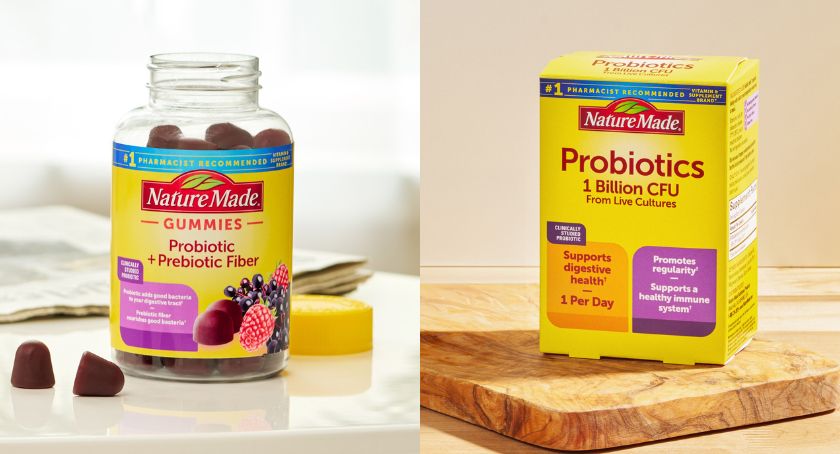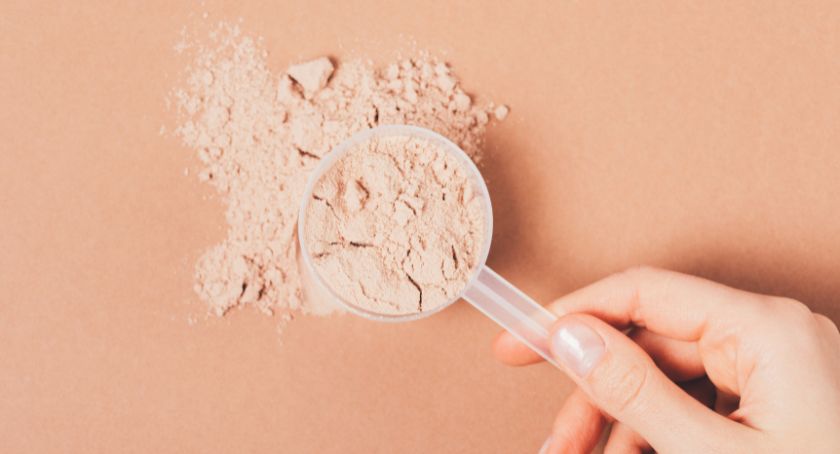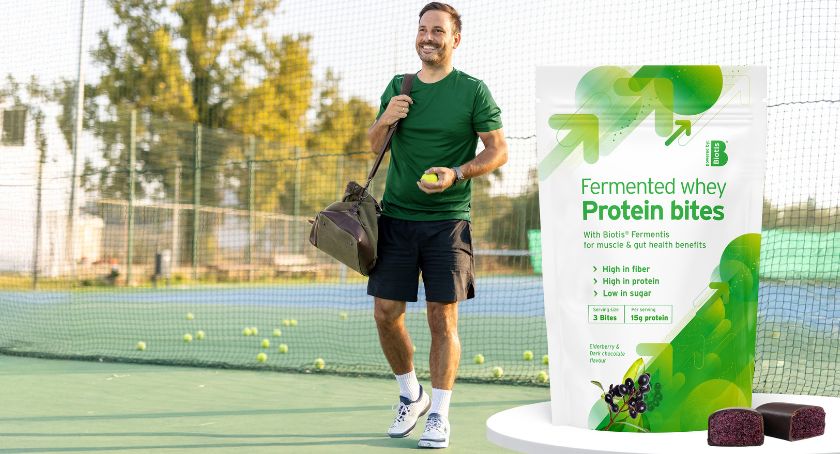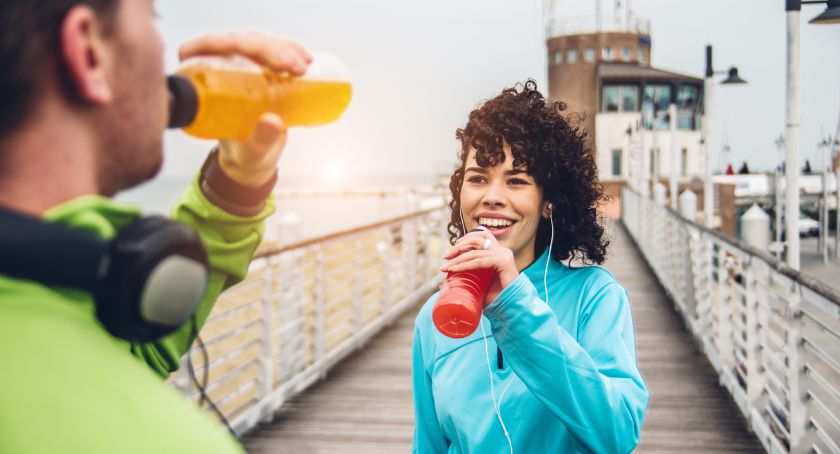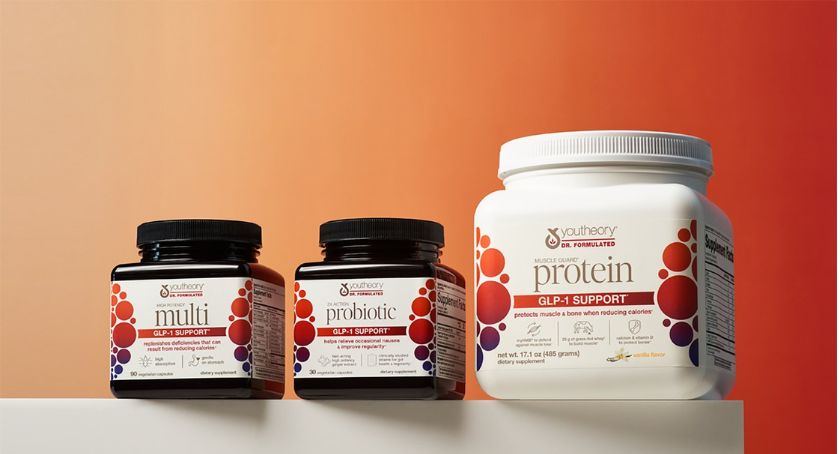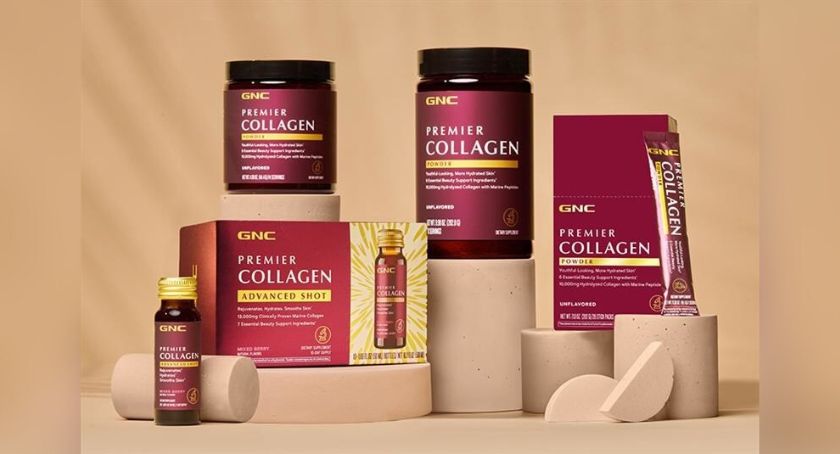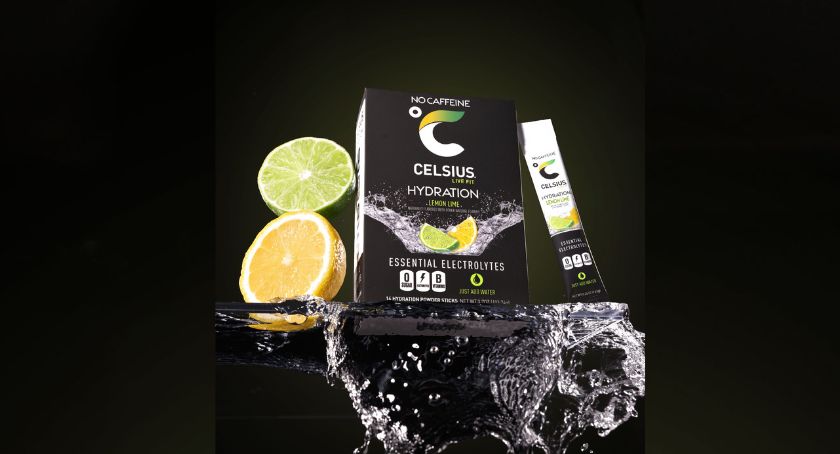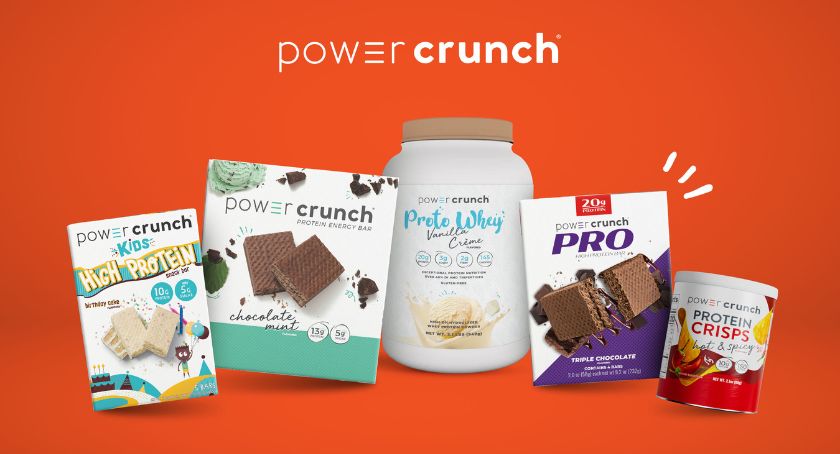Features
Segmenting the Sports and Active Nutrition Market for Everyday and Elite Athletes
Innovative product formulas that address unique nutritional needs are building a durable and diverse marketplace.

By: Mike Montemarano
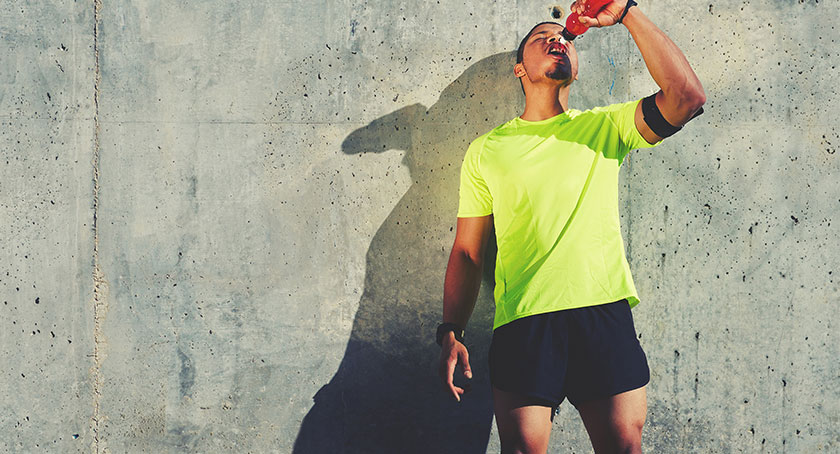
The sports and active nutrition marketplace continues to cater to a diverse range of consumers, and a wide range of fitness goals.
“Consumers are moving from a one-size-fits-all approach, instead seeking sports nutrition products tailored to unique fitness levels, dietary preferences, and health conditions. This shift reflects a broader trend toward personalized wellness, where consumers expect products that align with their individual bodies and lifestyle choices,” said Pelin Thorogood, co-founder and executive chairwoman of Radicle Science.
Elite athletes, once the central focus for sports nutrition brands, are still an important part of the discussion. But the inclusion of everyday consumers has become central to market growth.
Today’s core consumers “aren’t necessarily training for marathons or striving for peak athletic performance. Instead, they’re focused on optimizing their overall health and wellbeing,” with prevention and healthy aging in mind, said Susan Hewlings, PhD, RD, senior vice president of scientific affairs at Radicle Science. “They’re interested in ingredients that promote vitality, support joint health, improve skin elasticity, and bolster the immune system.”
Mainstream adoption of sports and active nutrition products is fueled by “shifting attitudes about body image by modern consumers, the expanding health halo of protein, and recognizing the value of broader, more structural health goals that are tied to deeper lifestyle changes,” said Matthew Oster, senior industry manager of consumer health at Euromonitor International.
Jordan Miller, vice president of marketing at Nutrition21, noted that mainstream brands are trying to reach hardcore sports nutrition users, while established brands in this market are trying to break out in more mainstream spaces.
Consumer spending patterns are aligned with this, noted Bryan Morin, brand manager of NOW Sports. Sports nutrition consumers are holistically-minded, seeking out general health products like vitamin D, omega-3s, and probiotics in their regimens, and conventional wellness shoppers are intrigued by more performance-oriented offerings.
“Over the past year, we’ve continued to see a significant shift toward holistic health and wellness,” concurred Sébastien Bornet, vice president of global sales and marketing at Horphag Research. Pycnogenol, the company’s patented pine bark extract, has been seeing an uplift in sports nutrition launches as a result of athletes’ interest in these holistic products, he noted.
Grand View Research valued the global sports nutrition market at $45.24 billion in 2023, projecting growth at a CAGR of 7.5% from 2024 to 2030.
According to Oster, the market is seeing strongest growth in developing regions, which, historically, have had low market penetration. In these regions, both the traditional performance and muscle-building products and more generalized active nutrition products are performing well.
Consumer Trends
Innova reported that 31% of global functional nutrition consumers have increased their consumption of sports nutrition products, while 60% maintained consumption over a year. Of those who increased usage, 43% did so because they exercised more.Beverages dominate the sports nutrition market, and, as a standalone delivery format, are expected to reach a market size of $27.5 billion by 2028, according to Mintel. Two-thirds (68%) of consumers who use sports and performance beverages consume them at least once per week, for plenty of reasons other than supplementing exercise.
Steve Fink, vice president of marketing at PLT Health Solutions, noted that beverage-friendly branded ingredients such as the company’s RipFactor Muscle Accelerator and Dynagenix Muscle & Joint Formula are seeing an updraft from the beverage surge.
Consumers are looking for their products to be more “experiential,” Fink noted, with fast-acting, palpable effects. “In sports/active nutrition, speed doesn’t kill, it wins.” The company’s R&D process relies on ingredients with clinically demonstrated efficacy in matters of hours or days, depending on use cases, he said.
Sports and active nutrition consumers are tech-savvy and enthusiastic about the latest wearable fitness trackers and other digital tools, Thorogood said. “These devices can provide continuous, real-time data on various physiological metrics, including heart rate, calories, sleep patterns, and hydration levels, offering new data on an individual’s physical state.”
Artificial intelligence (AI) will also have a breakout moment, serving as a personal coach of sorts to consumers by tracking progress and offering recommendations. The B2B space can harness AI to evaluate consumers’ health and behavior data to create better products, Thorogood added.
In addition to wearable technology, advances in genetic testing and microbiome analysis are also inspiring consumers to think about how they can fine-tune their nutrition to better fuel their athletic pursuits, said Shawn Baier, vice president of business development at TSI Group LTD.
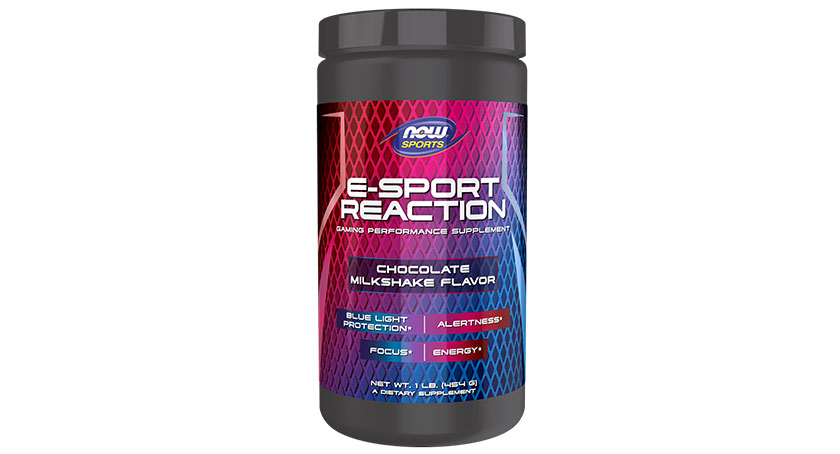
NOW’s E-Sport Reaction features extended-release caffeine, enXtra botanical extract, and Maquibright, a maqui berry extract for dry eye support.
Raising the Bar
Compared to just a few years ago, consumers’ standards about how clinical evidence is presented to them have risen.Shoppers are fed up with “health-washing,” which is compelling brands to invest more in clinical research and recalibrate how they communicate those findings, Thorogood said.
Hewlings said that consumers are asking for studies on finished products, not just ingredients, and for brands to be transparent about that distinction. The average wellness shopper also wants to see themselves represented in the populations on which a product was studied; they know their needs differ from those of top-level athletes in their physical prime.
Horphag Research has been testing its ingredients in both everyday people and higher-level athletes, Bornet noted. A 2014 two-part study on Pycnogenol assessed the ingredient’s ability to impact performance, oxidative stress, and more. In part one of the study, which included 147 recreational athletes, those in the treatment group saw significant improvements in running time and endurance compared to the treatment group after 8 weeks, with corresponding improvements in muscle pain and oxidative stress. Part two evaluated 54 male triathletes after a 4-week treatment period. Triathletes who took the supplement decreased average times from baseline with improvements to muscle cramping and oxidative stress.
The category is influenced by broader demands for products perceived as natural, with clear labeling.
“Sports nutrition products are moving away from proprietary blends on labels and offering full transparency to the consumer,” and are more heavily reliant today on third-party certifications to convey accountability,” Morin said.
“An overarching demand for a ‘return to nature’” is driving interest in botanical extracts, plant-based ingredients, and natural sources of nutrients, said Paula Limena, vice president of global marketing for health and wellness at ADM. Some examples include vitamin C-rich acerola powder, plant-derived vitamin E, and red beet, which contains nitrates, vitamin C, potassium, and magnesium. “Ingredients like these can meet demand for longevity and proactive wellness support, while targeting individualized lifestyle goals.”
“Consumers are increasingly more concerned about the side effects of their sports nutrition products, with over half of consumers globally stating after-effects are a concern when it comes to use,” said Miller, emphasizing the need for safety and tolerability data to be front-and-center.
“This can be demonstrated in clinical studies that monitor blood pressure and heart rate before, during, and after consumption of an ingredient,” he added. “There are also validated questionnaires that can illustrate an increase in feelings of energy.”
Historically, the sports nutrition segment has been under heightened scrutiny, noted John Travis, principal technical manager at NSF Certified for Sport.
Earlier this year, Amazon included sports nutrition products as a priority in rolling out its heightened testing requirements. While the broader industry may have mixed feelings about the process, “We’re pleased to see retail and e-commerce platforms making sure the good players in our industry are rewarded and the bad players don’t have an avenue to sell,” said Travis, noting that Amazon’s reach can create tide changes.
“Sports supplements are most vulnerable to bad actors because of the consumer population to which they are marketed,” Travis said, and research suggests that athletes are prone to risk-taking behavior and more open than others toward supplementation. This “creates a playing field ripe for adulteration by those actors preying on that vulnerability,” he said.
Overall, there’s been more dialogue about athletes’ mental health, Travis noted. Priority areas include new sports nutrition products featuring ingredients for sleep hygiene, such as melatonin, 5-HTP, valerian, and other novel ingredients, as well as broader mood support products.
“Think of the high-profile cases of mental health challenges reported by athletes at the Olympics, such as Simone Biles or Caeleb Dressel. I think the common person on the street, including those in the supplement industry, may underestimate those pressures or worse, take advantage of those pressures in their bid to help the athlete with products that may place their ability to compete in jeopardy.”
Athletes and athletic organizations are placing mounting pressure on the industry to keep raising the bar on validated testing protocols and transparency, Travis said.
NSF Certified for Sport stands alone, he added, in terms of the banned substances for which it tests, the execution of its testing methodologies in ISO-accredited labs, and as the only ISO-accredited certification service for supplements.
Today, it is the only third-party certification recognized by the U.S. Anti-Doping Agency, Major League Baseball, the National Hockey League, and the Canadian Football League. “It is also recommended by the NFL, UFC, NBA, PGA Tour, LPGA, CCES, APSDA, iNADO, Ironman, NASCAR, Taylor Hooton Foundation, and others,” Travis said.
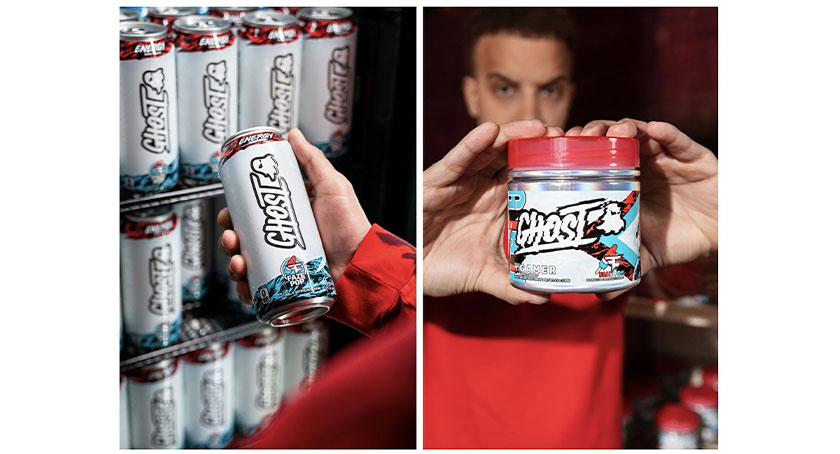
GHOST Gamer energy supplements are formulated with the cognitive and energy needs of top-tier gamers in mind.
Product Trends
According to SPINS, sports and active nutrition products are often positioned for different occasions, falling within pre-workout, intra-workout, immediate post-workout, and recovery camps. Brands can build interest by offering a full range of solutions for each occasion.These products are “shifting toward more lifestyle-friendly delivery methods,” said Maggie McNamara, vice president of global marketing at Gencor. “With new patented technology such as Pharmako Biotechnologies’ LipiSperse, formulators can now create gels for use while in activity, or an RTD shot, stick pack, etc.” Some of Pharmako’s other delivery/dosage specialties include a self-micro-emulsifying drug delivery system, cold water dispersion technology, compressible powdered oils, and liposomal technology, McNamara noted.
Thorogood said there are plenty of other factors downstream of exercise to consider in product development. “There’s a growing focus on how sports nutrition products can support not just physical performance, but also mental wellness, immune health, and longevity.”
SPINS noted in a recent blog post that it’s important to keep up with evolving exercise trends. The 2010s was marked by the CrossFit movement, while in the 2020s, the go-to exercise regimen has been high-intensity interval training (HIIT). “Looking forward, marathon training is anticipated to be the next big trend, reflecting the growing interest in endurance sports,” the company reported.
There are several unique factors related to endurance to consider, noted McNamara. “Weekend warriors and professional athletes constantly seek ways to enhance their cardiorespiratory fitness and mental sharpness and clarity, which are crucial factors in athletic performance, particularly endurance events.”
Overcoming the Gender Gap
There are gender differences regarding the health goals of sports nutrition consumers, with men over-indexing on muscle and recovery and women over-indexing on general health and weight loss claims, according to Mintel.Women also over-index on products that promote hydration and flexibility compared to men, who are more interested in performance and muscle benefits, said Oster.
Women’s relatively low interest in more performance-oriented products could be explained in part by more systemic gender-based gaps in clinical research. Just 6% of mainstream sport and exercise science research has been conducted on exclusively female populations, according to authors writing in the European Journal of Sport Science, who estimated that female representation is even more sparse for sports studies where nutrition is a factor.
While long overdue, female athletes’ representation is steadily improving, observers noted. Signs of the tide change include a near-equal number of male and female athletes for the first time at the Summer Olympics, said McNamara.
Sports nutrition brands that call out “pinkwashing,” and adequately substantiate the benefits of their products in women, will lead the category in the years to come, she said.
“Women have many unique and differing needs compared to men. We now see studies targeting these differences and more launches of ingredients, finished products, and dosing specific to a woman’s needs,” said McNamara. In the sports nutrition realm, Gencor recently supported a study on Libifem, a standardized fenugreek extract, in women between the ages of 25 and 45, which linked the supplement with significant, dose-related changes in body composition, endurance, muscle strength, and recovery.
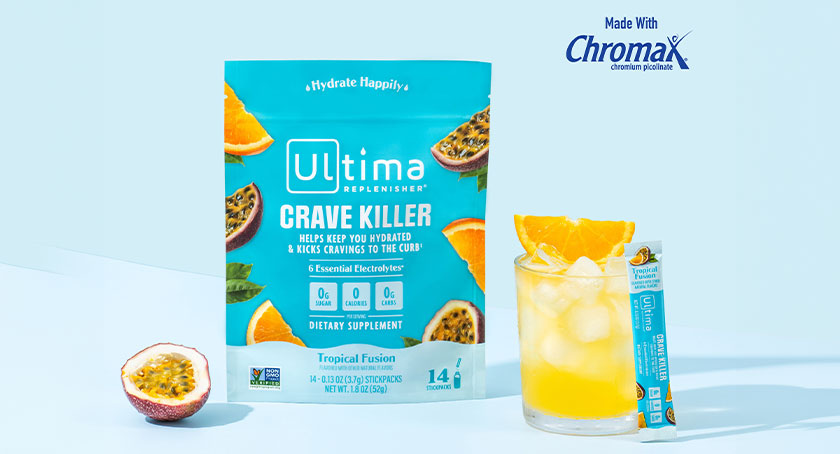
Ultima Replenisher launched a new hydration powder featuring Nutrition21’s Chromax to support weight management goals.
Physical and Mental Energy
In addition to energy and focus, companies are marketing caffeine for its benefits to muscle strength and physical fatigue, noted SPINS. Performance nutrition products containing caffeine have increased by 183.1% in dollar sales and by 106.9% in unit volume over a year-long period ending in May.Amino acids with cognitive health benefits have soared, according to SPINs, including tyrosine (+288.2% in dollar sales and 218.4% in units sold), taurine (+220.4% dollar sales, +135.9% units sold), and arginine (+3.5% dollar sales, +9.5% units sold).
Suppliers are innovating with dosage technologies to help mitigate some of caffeine’s unwanted effects.
PLT offers zümXR, a line of targeted, delayed, and extended-release forms of caffeine developed using pharma modeling techniques with USP methodologies used to measure performance. A randomized, double-blind, two-way crossover pharmacokinetic study found that the delivery system made a significant difference in the caffeine half-life of zümXR compared to the anhydrous caffeine found in coffee, Fink noted. “A key driver of the development of these products was to control and extend the level of caffeine in the blood,” leveling out caffeine spikes and crashes.
NOW Sports introduced Sustained Energy Capsules, featuring B vitamins, chromium, magnesium, L-carnitine, and Xtenergy, a green coffee bean-derived caffeine with a unique extraction process and patented sustained release technology, Morin said. A clinical study comparing Xtenergy to immediate-release caffeine found that it extended caffeine’s benefits over several hours, with fewer feelings of being “tense” or “edgy,” he noted.
“For physical and mental energy, botanical extracts are in the spotlight,” said Limena. “Certain botanical extracts, like guarana, green tea, and yerba mate (all of which are used in ADM’s WKUP formulation) deliver natural sources of caffeine … while mitigating common concerns for increased heart rate and temporary impact on blood pressure.”
TSI Group specializes in a metabolite of caffeine called paraxanthine (branded as Enfinity), which was shown to be comparable to caffeine with fewer side effects. “Formulating with powerful duos like Enfinity and Peak ATP can elevate a product by taking both mental and physical performance to new heights. Peak ATP supplies immediate cellular energy (by increasing levels of adenosine triphosphate), while Enfinity enhances focus and reduces fatigue by modulating adenosine receptors,” Baier said.
He noted that Peak ATP has also been shown to support blood flow, muscle activation, and post-exercise cognitive function in a systematic review and meta-analysis.
Caffeine won’t be dethroned as the top energy ingredient any time soon, and newer sources of caffeine have a strong health halo. Still, consumers are curious about stimulant-free options.
“Brands that can prove their caffeine-free products boost motivation, enhance performance, and eliminate those unwanted side effects are setting themselves apart in the market,” Hewlings said.
These new ingredients, with or without caffeine, can help brands create custom energy profiles, which are in high demand for sports nutrition and weight management products alike, said Fink. “Whether it is for sports, pick-me-ups, or late-night study sessions, use occasion is becoming an important factor in how energy benefits are delivered.”
Fink noted strong interest in botanical energy solutions, such as Zynamite, a patented Mangifera indica extract which has been the subject of 10 studies evaluating its role in mental energy, improved workouts, and recovery.
Horphag Research has been investing in research on the energy and sport performance benefits of its latest ingredient, Robuvit, an antioxidant from French oak wood, said Bornet. A 2015 study found that, among people who reported general fatigue at baseline, those who took Robuvit reported feeling more energy and fewer fatigue symptoms within 4 weeks. “Robuvit is rich in roburins and other flavonoids unique to oak wood. Research shows that roburins enhance basic cellular functions to combat the aging process, increase energy, and fend off fatigue.”
Additionally, a study published in Minerva Cardiology and Angiology found that the ingredient improved triathlon time and reduced post-workout cramps and muscle soreness. Robuvit’s metabolites, urolithins, may play a role in mitochondrial and muscle function, according to the study.
Nutrition21’s two stimulant-free energy ingredients, a bonded arginine silicate ingredient called Nitrosigine, and nooLVL, a combination of bonded arginine silicate and inositol, have often been utilized in pre-workout and energy products, and each have been clinically-validated as non-stimulant ingredients.
Morin noted that EnXtra Alpinia galanga extract was clinically studied for its energy-stimulating benefits. Research showed a single dose improved alertness, reaction time, and correct responses, reducing errors in a cognitive battery assessment for up to 5 hours. Importantly, chronic usage had no impact on heart rate or blood pressure that would indicate safety concerns over 12 weeks.
Aside from energy, ingredients studied primarily for mood improvement are also being featured more in the sports and active nutrition category, Fink noted. “Our Zembrin Sceletium tortuosum ingredient saw a dramatic increase in sales, particularly in active/sports products. We could suggest that people are using exercise as a way of maintaining balance and a good outlook on life.”
Public awareness of the term “nootropic” has grown significantly, noted Baier.
“Consumers are experiencing acute and stimulating benefits and thus getting those improvements they are searching for. It’s this whole new concept of optimizing our focus, our thinking, and our clarity.”
Esports supplements will be a major growth driver for innovative products with cognition and energy positionings, Miller noted.
A survey by Prinova found that 66% of all consumers play video games once weekly. Of that subset, 61% said they used food or nutrition products to supplement their gaming performance. Caffeine, B vitamins, and ginseng were most common.
Deeper cognitive benefits and blue light protection to help gamers mentally recover may also be well-received, noted Morin.
Some recently-launched sports nutrition supplements that feature on-trend energy attributes include:
• Podium Nutrition Athlete Pre-Workout, which features a blend of amino acids, minerals, and zümXR extended release caffeine;
• RAW Nutrition’s Christopher’s Secret Stuff, a caffeine-free pre-workout featuring L-citrulline, betaine anhydrous, L-tyrosine, alpha GPC, and huperzine A;
• Gainful Preworkout, a blend of amino acids which features a high-, low-, and no-caffeine option;
• GHOST’s Gamer focus and energy supplements featuring essential nutrients, amino acids, nooLVL bonded arginine silicate, Cognizin citicoline, Astragin botanical extract, and natural caffeine; and
• NOW Sports’ E-Sport Reaction supplement, a chocolate milkshake flavored powder featuring Xtenergy sustained-release caffeine, enXtra, a botanical extract for focus and alertness, and Maquibright, a maqui berry extract for dry eyes.
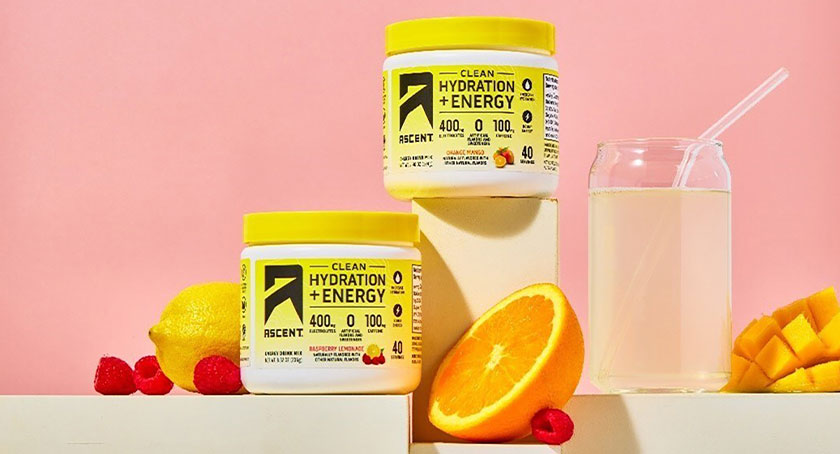
Ascent’s Clean Hydration + Energy powder features 100 mg of caffeine to provide enhanced energy for athletes, while also tackling hydration.
Hydration
According to SPINS, the category of hydration and electrolyte products grew 50% in 2023 to reach $1.3 billion in sales.This year, 34% of consumers increased their consumption of sports and performance beverages, while 54% had about the same, according to Mintel. While Gen X and Baby Boomers use sports drinks primarily for replenishing electrolytes during/after a workout, for Gen Z, sports drinks “have transcended their traditional use, becoming a part of their daily regimen.”
Aside from exercise, Gen Z uses sports drinks for a quick pick-me-up (34%), as a snack (22%), with meals (31%), in place of a meal (17%), on the go (42%), when socializing (21%), or at work/school (25%), Mintel said. Caffeine, vitamins, and minerals can help brands tailor sports drinks toward more leisurely activities, similar to how energy drinks began to target gamers.
“The hydration category, while still performing dramatically well, is at risk of commoditization, as the category becomes overrun with copycat brands especially in soluble powders that are trying to latch onto the success of Liquid IV,” said Oster. “Segmentation is afoot, especially around ‘advanced’ formulations that include a higher amount of carbohydrates, like the Endurance series from brands like Nuun for extreme athletics like marathoning, that offer the feeling of a more curated option,” Oster said.
Limena said that naturally-sourced caffeine, botanical extracts, and ready-to-mix powder-friendly biotics can all be eye-catching add-ons.
While there is no single standard for electrolyte replenishment, “products should include the three main electrolytes magnesium, sodium, and potassium,” said Morin. “The American College of Sports Medicine recommends 300-600 mg of sodium per hour of activity.”
Consumers told Mintel they’re looking for enhancements and add-ons beyond hydration, and want brands to shake things up, with 45% desiring extra nutrition and diverse flavors. Consumers reported they were also looking for new and interesting flavors (44%), functional claims on package (25%), more versatility for different uses and occasions (23%), larger (23%) or smaller (22%) sizes, and more.
Some recently launched hydration products include:
• Nuun Endurance, an electrolyte powder with added sugars, low-dose caffeine, and calcium;
• Ultima Replenisher’s Crave Killer, an electrolyte powder that features Nutrition21’s Chromax chromium picolinate to support craving reduction.
• Huel Energy+, an energy drink featuring 27 vitamins and minerals, soluble fiber, acerola cherry powder, and L-theanine;
• Bucked Up Long Range, a hydration powder with electrolytes, calcium, vitamin C, and sugars specifically tailored for endurance athletes; and
• Ascent’s electrolyte powder, which features 100 mg of caffeine and 2 grams of sugar for enhanced absorption.
Protein and Peptides
While whey protein continues to dominate the sports nutrition market, experimenting with a variety of plant-based sources can appeal to vegetarian/flexitarian consumers who might be interested in a sustainability story, or are simply looking to try something new.“We’re seeing innovation with ingredients such as barley-rice protein, fava bean protein, and upcycled plant protein,” said Morin.
However, with the emergence of more palatable whey-based offerings, like clear whey isolate which tastes smoother and is easier to digest, plant proteins have ceded some market share, Oster said.
Consumers are presented with a growing menu of options for plant and animal proteins that offer complete essential amino acid profiles, and most mainstream consumers view protein as a commodity macronutrient. So, simpler considerations, rather than technical ones, are the biggest purchase drivers.
“At the moment, consumers are responding to simple taste and texture considerations,” said Oster. “Innovation in product delivery is critical to sustain consumer interest.”
No matter the end goal, protein is being utilized as a fuel source and for satiety, and “can assist in preventing feelings of tiredness and help people feel full longer,” Limena said. “Our highly functional, clean-tasting soy and pea proteins can fortify applications, delivering high protein content and diversity, maximizing nutritional value and the sensory experience. Plus, soy is one of the few non-animal proteins that is a ‘complete protein’ with a PDCAAS (protein digestibility corrected amino acid score) of one.”
Add-on ingredients that work synergistically with protein powders to support muscle growth and maintenance, joint health, and adjacent health areas are growing more attractive, noted Baier. “To stand out in the protein supplement space, creating a unique multifunctional formulation with proven claims is vital.”
Nutrition21’s Velositol, a blend of two forms of chromium and amylopectin, for instance, has been clinically shown to increase muscle protein synthesis, with associated improvements in muscle strength, power, and endurance. While it works in isolation, its compatibility in protein products is a big draw for highly active people looking to gain muscle, or older people looking to stave off sarcopenia, Miller noted.
Protein is taking on new shapes and forms; today’s protein beverages are incorporating new flavors, textures, and packaging, while protein snacks are diversifying beyond the standard bar format to include puffs, chips, pretzels, crisps, and more.
Bioactive peptides are a wide-open frontier in which new health benefits are being uncovered. While they’re well-known to benefit muscle growth, recovery, endurance, and inflammation, emerging studies are uncovering potential links between certain bioactive peptides and digestive health, gut inflammation, antioxidant activity, heart health improvements, and other markers of physical stress.
Tailored, low-dose peptides can be designed to tackle common wellness challenges like inflammation, Hewlings said, in ways that protein can’t as a macronutrient. She noted a review published in Frontiers in Nutrition in August, which analyzed the known mechanisms of bioactive peptides in treating inflammation, such as by regulating inflammatory mediators and pathways, acting as antioxidants, and modulating immune factors.
The review summarized where clinical evidence is strongest, across the relationship between peptides and skin, eye, joint, lung, and intestinal inflammation. While bioactive peptides are implicated with several challenges related to manufacturing and bioavailability, they “have promising aspects for the preparation of anti-inflammatory drugs,” the authors concluded.
A sample of protein products paving the way for these emerging trends include:
• Thorne’s RecoveryPro, a whey protein powder with tryptophan, magnesium, cysteine, BCAAs, and GABA for enhanced rest and muscle recovery;
• Happy Viking’s Superfood Meal Powder, which features 20 grams of pea and rice protein, phytonutrients from broccoli, ancient grains, carrots, and more, DHA, and 1 billion probiotics. Happy Viking’s superfoods helped co-founder Venus Williams return to the court after dealing with an autoimmune disease.
• Orgain and Blender Bites’ Superberry Sport 1-Step Smoothie, a frozen, blendable product which combines Orgain’s plant protein with tart cherry, maqui berry, organic strawberry, coconut, and turmeric.
• Bulletproof’s Energy Collagen Protein Powder, which combines 22 grams of hydrolyzed collagen with tryptophan, SunFiber guar extract, cordyceps, phosphatidylcholine, Panax ginseng, and MCT oil.
Recovery
Products for both immediate post-workout benefits and long-term recovery have seen the most growth in 2024, according to SPINS. There’s much to offer everyday recreational athletes who struggle to get out of bed after taking a thrashing at the gym.With holistic health in mind, essential nutrition is playing a bigger role in this space. Morin noted that heavy exercise can deplete the body of vital nutrients, making ingredients like ZMA (zinc, magnesium, and vitamin B6 in a bioavailable format) highly suitable for all consumers, Morin said. “Because physical activity can increase the need for these two minerals, ZMA is the ideal supplement to aid in their replenishment.”
In addition to typical recovery benefits, older audiences especially are drawn to the holistic properties of certain ingredients, Oster said. For instance, marketing creatine to them for its cognitive benefits could draw them to the category of recovery products.
“No matter the level of athleticism, brands could build a line of products catering to age ranges and sexes. These could include combining branded ingredients with other key nutrients,” tailored for various life stages, said McNamara.
No matter the target consumer, products should meet a tried-and-true combination of biometric, physical performance, and self-reported tests like the DOMS protocol in a clinical study, said Hewlings. “This approach involves a specific exercise intentionally designed to cause muscle breakdown, followed by monitoring recovery markers, including subjective feedback, over a set period, usually 72 hours post-workout … The DOMS protocol is a widely recognized and reliable method for assessing muscle recovery. Brands can deliver products backed by solid, measurable results that resonate with consumers seeking effective recovery solutions.”
When it comes to biomarkers, “critical areas of focus include myoglobin, a marker for muscle damage, the Akt/PkB pathway, a downstream region of the mTOR pathway involved in muscle protein synthesis, and lactate levels,” said McNamara, along with muscle biopsy.
Older demographics are “realizing the importance of independence and mobility as they age, and desire to maintain their health span,” said Baier. “They’re turning to sports nutrition products to address age-related muscle loss, bone density, and overall vitality.”
Plenty of botanicals are being spotlighted for newfound joint and muscle recovery benefits, noted Fink, such as Dynagenix Muscle & Joint Formula. A 60 mg dose of the Boswellia ingredient was linked to improved DOMS metrics and joint discomfort. It’s the only Boswelllia studied for both joint and muscle health, Fink said, and is one of the rare ingredients in which joint recovery was studied in young men in a sports setting, rather than in older, arthritis sufferers.
Across the entire health and wellness industry, longevity is being embraced by younger audiences. The recovery space can be a suitable channel to introduce people in their 30s to longevity-supporting ingredients, before age starts to impact their physical performance.
“Healthy aging is not just for seniors anymore,” Fink said. “The way we take care of ourselves when we’re younger has profound implications on our health and wellbeing later in life. So, we at PLT think that consumer products companies can give a message to a younger demographic about healthy aging today.”
Ingredients like MyHMB (TSI Group’s branded hydroxymethylbutyrate) can be an “ideal addition to recovery formulations, particularly for athletes who are looking to maintain lean muscle during periods of intense training or caloric restriction,” Baier noted. Ingredients like HMB “not only help repair muscle but also enhance muscle retention, setting their products apart in a competitive market.”
While the impact of exercise on the gut microbiome mostly trends toward a positive direction, intense exercise may potentially cause certain issues, such as increased intestinal permeability, said Limena. Recovery formulations could include microbiome support to prevent digestive issues related to over-exertion.
“We’re helping spur innovation around the ‘gut-muscle axis’ with our Active Lifestyle Formulation (ES1, BPL4, and BPL15 branded probiotic strains),” she added. “Clinical research shows this formulation supports certain biomarkers related to post-exercise oxidative stress. We also examined the effects of our spore-forming probiotic DE111 during the offseason training of collegiate athletes, with results showing an increase in circulating TNF-a in males, as well as decreased body fat percentage in females.”
Mental resilience is also an important concept in recovery formulas. “Mental health and mood have become more prevalent in sports nutrition,” noted McNamara. “The industry has adapted by investing in research to see how ingredients can support this critical aspect of an athlete’s regimen. Our investigations into Levagen+ (Gencor’s branded PEA ingredient) have revealed its comprehensive impact on an athlete’s performance, recovery, immune health, sleep, and mood, each playing a vital role in their overall wellbeing and performance.”
Sleep is the cornerstone of repairing muscle damage and reducing post-exercise inflammation, and some sports recovery formulas are meant to be taken before bed, featuring popular sleep ingredients.
Morin pointed to NOW’s recently-launched Rest & Repair formula, which combines myHMB with CherryPure tart cherry powder to support muscle recovery with 5-HTP, a cofactor of serotonin and melatonin, and GABA, which may promote relaxation and ease nervous tension.
Some sport recovery supplements driving these trends forward include:
• Bare Performance Nutrition’s Peak Sleep, which features magnesium, potassium, a blend of cordyceps, reishi, king trumpet, shiitake, lion’s mane, and turkey tail mushrooms, Gencor’s Levagen+, 5-HTP, GABA, and L-theanine;
• Garden of Life Sport’s Organic Plant-Based Recovery powder, which features fruit and plant extracts, combining organic energy blends, pea protein, an organic antioxidant recovery blend, and an organic B vitamin blend to restore nutrients immediately after working out;
• Trace Minerals’ Post Workout Powder, which features BCAAs, creatine monohydrate, beet root powder, HMB, and an electrolyte complex; and
• Olly Post-Game Recovery Rings, pineapple-flavored gummy rings featuring vitamin D, electrolytes, and turmeric.
About the Author: Mike Montemarano has been the associate editor of Nutraceuticals World since 2020. He can be reached at mmontemarano@rodmanmedia.com.



